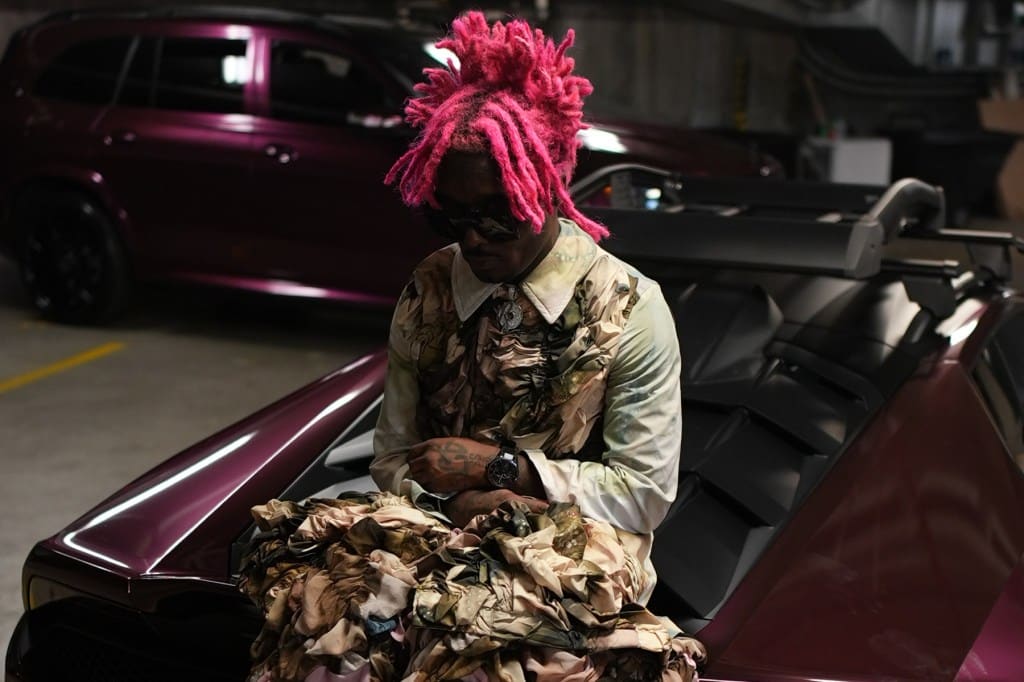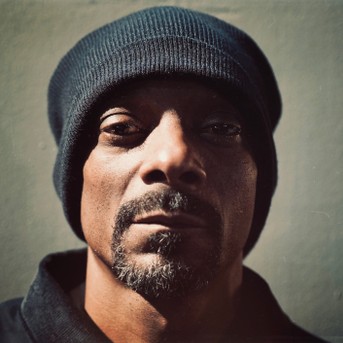News
Page: 32
Trending on Billboard The KPop Demon Hunters train could keep rolling right through awards season. According to the Associated Press, the animated Netflix mega-hit movie is among 35 features that are officially eligible for the animated feature category at the 2026 Academy Awards. Demon Hunters made the first cut on the list released by the […]
Trending on Billboard
Tributes from across the music world are pouring in for Jimmy Cliff, the reggae pioneer whose death was announced earlier this week.
Cliff, 81, died following a seizure and pneumonia, according to a statement shared by his wife, Latifah Chambers, on Monday (Nov. 24). While the family confirmed his passing, artists across genres — dancehall, pop, rock and reggae royalty — are now publicly honoring the singer’s legacy.
Sean Paul was among the first to share a tribute, posting a black-and-white image of Cliff on Instagram and writing, “R.I.P 2 a real general. He hit them the harder they came. Fly high my G.” Fans immediately echoed the sentiment, remembering Cliff as one of the musicians who helped shape the global identity of reggae.
Explore
See latest videos, charts and news
Yusuf/Cat Stevens, whose 1970 song “Wild World” became one of Cliff’s signature recordings, shared a heartfelt message on Facebook. “A powerful presence,” he wrote. “God bless him. His songs always had some message of peace — may he find it now and forever.”
The Marley family also honored him, noting Cliff’s pivotal role in Bob Marley’s early career. “Jimmy was an instrumental figure in Bob’s coming up,” they wrote on Instagram. “He brought him to producer Leslie Kong in 1962 to record his very first singles, ‘Judge Not’ and ‘One Cup of Coffee.’” The post included a smiling throwback photo of Cliff, a reminder of the deep roots the two shared inside Jamaica’s music history.
Shaggy added his own tribute with a photo of the pair onstage together. “Saddened to hear about the passing of the legendary Jimmy Cliff,” he wrote. “His voice, his message, and his spirit helped shape the soul of reggae music. We’ve lost a true icon, but his light and legacy will live on forever.”
UB40 frontman Ali Campbell described Cliff as a “reggae forefather,” writing, “A true foundation, a pillar of our music, and one of the first to carry reggae out into the world. Rest Easy King, ‘Many Rivers to Cross.’”
Trending on Billboard
Ariana Grande is rethinking what touring looks like as she heads into a new chapter of her career.
In a newly published conversation with Nicole Kidman for Interview magazine on Nov. 24, the singer and actress opened up about her upcoming Eternal Sunshine world tour, revealing that the run will be intentionally smaller than the massive global treks she’s mounted in the past.
“We’re doing a small amount compared to what I used to do back in the day. I think it’s 45 shows,” Grande said. “It’s not that small, but it’s at least half of what I used to do.”
Explore
See latest videos, charts and news
The 2026 tour follows her Billboard No. 1 album Eternal Sunshine, released earlier this year, and marks her return to full-scale live performance after stepping away from music to film the two-part Wicked movie franchise. That period, Grande said, played a transformative role in reshaping her relationship with fame, creativity and the pressures that accompany commercial success.
“I’ve just been healing my relationship to music and touring over the past couple of years,” she told Kidman, explaining that acting helped her reconnect with the joy of creating without the intensity that once accompanied her pop stardom. She described Eternal Sunshine as an album that allowed her to rebuild her process: “I think the time away from it helped me reclaim certain pieces of it and put certain feelings that maybe belonged to my relationship to fame… in a box somewhere else.”
Grande said her time playing Glinda in Wicked and Wicked: For Good helped her “take baby steps toward healing,” particularly around the anxiety she felt early in her pop breakout. “I think it just held some traumas for me before, and I feel those dissipating,” she said. “That is such an extraordinarily beautiful thing.”
She also reflected on how she has learned to detach from public commentary and criticism, saying that she now relies on meditation rather than internalizing negative reactions. “Should that dance have to be a part of being an artist,” she wondered, “or should that just be put in a box far away from me?”
Grande’s Eternal Sunshine tour will launch in June 2026 in Oakland, Cali., before heading through North America and Europe, concluding in London in late August.
Trending on Billboard
Anthrax will return to Australia in March 2026 for four shows across Brisbane, Adelaide, Melbourne and Sydney, Live Nation announced Tuesday.
The run marks the thrash-metal veterans’ first Australian headline tour since 2019, extending a global touring period that has seen the band revisit material spanning more than four decades.
Hailing from New York and widely regarded as one of the “Big Four” of thrash alongside Metallica, Slayer and Megadeth, Anthrax have sold more than 10 million albums worldwide and remain one of heavy music’s most enduring live acts. Their 2026 Australian dates will feature a career-spanning setlist mixing fan favorites, deep cuts and selections from the band’s more recent catalog as they continue celebrating their legacy on the road.
Explore
See latest videos, charts and news
According to the announcement, the tour will kick off March 23 at Fortitude Music Hall in Brisbane before moving through Adelaide’s Hindley Street Music Hall on March 25 and Melbourne’s Festival Hall on March 26. The run will wrap March 28 at Enmore Theatre in Sydney. It marks the group’s return to all four cities after several years of international touring and festival performances.
Tickets go on sale Nov. 28 at 11 a.m. local time. A Mastercard presale runs Nov. 26 from 11 a.m. until Nov. 28 at 10 a.m., with additional Live Nation presale access beginning Nov. 27 at 11 a.m. and concluding Nov. 28 at 10 a.m. All times are local.
Anthrax has also finished mixing its forthcoming studio album, marking the band’s first full-length release in nearly a decade following 2016’s For All Kings, with drummer Charlie Benante confirming the milestone via Instagram on Nov. 24.
Key recording sessions and all final mixing took place at Dave Grohl’s Studio 606 in Northridge, California — a space long associated with major hard-rock productions. The band reunited with producer Jay Ruston, who previously oversaw For All Kings and 2011’s Worship Music, bringing continuity to the project as Anthrax enters its next era.
More information is available at livenation.com.au.
Anthrax Australian Tour dates:
March 23 – Fortitude Music Hall, BrisbaneMarch 25 – Hindley Street Music Hall, AdelaideMarch 26 – Festival Hall, MelbourneMarch 28 – Enmore Theatre, Sydney
Trending on Billboard
The Knockouts came to a close on Monday night (Nov. 24) on The Voice, finalising the teams for next week’s Playoffs as Snoop Dogg, Niall Horan and Reba McEntire filled their last remaining slots.
Explore
See latest videos, charts and news
The episode marked the final round of head-to-head performances before the competition shifts into its next phase, with each coach selecting winners based strictly on the night’s showing – and, in Snoop’s case, using his last Mic Drop to send one artist straight into a four-way showdown for a spot in the Rose Parade.
McEntire opened the night with her last Knockout pairing: Austin Gilbert, a country singer she previously stole from Michael Bublé, and Peyton Kyle. Gilbert performed Jake Owen’s “8 Second Ride,” while Peyton offered a pop-leaning counterpoint with “I Don’t Wanna Be” by Gavin DeGraw.
The other coaches noted the contrast between their styles, with Niall saying he’d “lean towards” Peyton for his potential to surprise viewers, while Snoop praised both contestants but advised McEntire that her pick depended on the direction she wanted to take her team.
McEntire ultimately selected Peyton, telling him he “had the voice” that fit the moment.
Niall’s final pairing brought together two four-chair turns: Dustin Dale Gaspard and Kirbi. Dustin was forced to skip rehearsals due to illness, meaning he walked into the Knockout without mentorship from Horan or guest advisor Joe Walsh. Kirbi delivered “Heartfelt Hallelujah” by Brandon Lake and Jelly Roll, while Dustin countered with a rugged take on “She Talks to Angels” by The Black Crowes.
The coaches were divided, with McEntire leaning toward Kirbi and Bublé praising Dustin for bringing something unique to the cast. Horan called Kirbi’s performance her strongest yet and advanced her, explaining that she provided an undeniable emotional centrepiece he couldn’t overlook.
The final Knockout of the episode came from Team Snoop, with Lauren Anderson performing Pink’s “Try” and Yoshihanaa offering a soulful, classic reading of “You’re All I Need to Get By” by Marvin Gaye and Tammi Terrell.
The coaches noted Lauren’s command of the stage and Yoshihanaa’s polished presence, with Horan saying Yoshihanaa “looked like a superstar.” S
noop chose Yoshihanaa as his winner – and immediately hit his Mic Drop for her, securing her a spot in the four-way Mic Drop face-off. “She did everything but drop the mic, so it was my job to drop the mic on her behalf,” he said during the episode.
With the Knockouts concluded, all four teams are now locked for next week’s Playoffs, featuring returning standouts, stolen contestants and newly advanced performers.
Team Snoop enters the next round with Ralph Edwards, Toni Lorene, Mindy Miller and Yoshihanaa. Team Niall moves forward with Ava Nat, Aiden Ross, DEK of Hearts and Kirbi. Team Reba features Aubrey Nicole, Ryan Mitchell (from the Carson callback), Aaron Nichols and Peyton Kyle, while Team Bublé brings Max Chambers, Rob Cole, Trinity and Jazz McKenzie into the Playoffs.
Season 28 of The Voice continues next Monday on NBC, airing at 9 p.m. ET.
Trending on Billboard
Aminé is bringing his Tour de Dance world tour to Australia in early 2026, confirming a four-show run across Sydney, Brisbane, Melbourne and Perth.
The dates extend a touring cycle that has already taken the Portland rapper through more than 40 shows across the United States, the United Kingdom and Europe behind his latest album, 13 Months of Sunshine.
Explore
See latest videos, charts and news
The album, released earlier this year, marked Aminé’s first solo full-length since 2020’s Limbo and arrived after Kaytraminé, his 2023 collaborative project with Kaytranada. 13 Months of Sunshine saw the rapper take a more introspective turn, weaving themes of heritage, grief, identity and growth into a 16-track set featuring guest appearances from Waxahatchee and Toro y Moi.
Tour de Dance has become Aminé’s most expansive run yet, hitting major festivals and headlining venues across North America and Europe throughout 2024 and 2025. The Australian leg marks the rapper’s first return to the country since 2023 and the fourth visit of his career. His most recent Australian shows followed the release of Kaytraminé and included festival appearances and sold-out headline dates.
Aminé has remained a consistent presence on the touring circuit since breaking through with “Caroline,” which peaked at No. 11 on the Billboard Hot 100 in 2017. He followed that with charting singles including “REDMERCEDES,” “Spice Girl” and “Shimmy,” and landed two albums on the Billboard 200: Good for You and Limbo, the latter peaking at No. 16.
The upcoming Tour de Dance dates will see Aminé return to mid-size theatres and halls, beginning Jan. 10 at Enmore Theatre in Sydney. The run continues Jan. 13 at Fortitude Music Hall in Brisbane and Jan. 15 at The Forum in Melbourne, before wrapping Jan. 20 at Metro City in Perth. Pre-sale tickets open Nov. 26 at 10 a.m. local time, followed by general on-sale Nov. 28 at 10 a.m. local time.
13 Months of Sunshine is available now via CLBN and distributed by Virgin Music Group. Ticketing and tour information can be found via Live Nation.

Trending on Billboard It’s a new era for Lil Uzi Vert. The Philly rapper is no longer signed to Atlantic, and Uzi returned on Monday (Nov. 24) to release a pair of singles independently with “Chanel Boy” and “Relevant.” The 31-year-old joins Rihanna and Jay-Z as the only two artists both signed to ROC Nation […]
Trending on Billboard
A judge has thrown out civil sexual assault claims brought against Kevin Liles by an executive assistant who worked for the legendary record executive at Def Jam in the early 2000s.
An anonymous woman filed suit in February alleging Liles, who was her boss and the president of Def Jam, made sexually inappropriate comments, groped her and ultimately raped her in 2002. Liles denied the claims as “patently false,” saying when they were filed that he has “intentionally built a reputation for doing things the right way, treating people the right way and empowering women.”
Related
As it turns out, these allegations are barred entirely from court. That’s because Def Jam’s corporate parent, Universal Music Group (UMG), already paid the woman $47,500 in 2005 to settle a civil rights complaint she’d filed with New York state regulators.
That original complaint alleged the woman was unlawfully fired in retaliation for complaining about verbal harassment and inappropriate dancing by Liles. It did not include rape claims. Without admitting any wrongdoing, UMG agreed to pay the woman in exchange for her agreeing not to bring any further legal action.
Liles was not involved in that settlement agreement, since he’d left Def Jam by the time it was signed. But U.S. District Judge Naomi Reice Buchwald held in a Monday (Nov. 24) order that the release language still “expressly and unambiguously covered” Liles, meaning the woman cannot now sue the music mogul.
“The agreement and release itself contains no language cabining its terms at all,” wrote Judge Buchwald. “To the contrary, the agreement consistently and intentionally utilizes broad language discharging ‘any and all’ claims which ‘are known or reasonably should be known’ by plaintiff.”
The judge threw out the lawsuit permanently, saying there’s no amendment the woman could make that would allow her to “avoid the consequences of a comprehensive settlement agreement.”
Reps for Liles declined to comment on the decision Monday. Lawyers for the accuser did not immediately return requests for comment.
Liles ran Def Jam from 1999 to 2004, and he co-founded 300 Entertainment with Lyor Cohen, Roger Gold and Todd Moscowitz in 2012. The label, which quickly gained recognition for developing hip-hop superstars like Megan Thee Stallion, Migos and Young Thug, was acquired by Warner for $400 million in 2021. He left his role as 300’s CEO last year.
A few months after the former Def Jam assistant brought her lawsuit this past year, Liles put out a statement saying rapper Lady Luck was trying to extort him with false sexual assault claims of her own. Liles said in May that Lady Luck, who was signed to Def Jam during his tenure, had threatened to release a book and file a lawsuit filled with “utterly false and horrendous allegations” if he didn’t pay her $30 million.
Trending on Billboard
Claire Rothman, a pioneering woman in the live entertainment industry whose positions included president and general manager of The Forum in Inglewood, Calif., died Saturday (Nov. 22) in Las Vegas. She was 97.
Rothman began her facilities career at the Spectrum in Philadelphia in 1967, when she was 39. In a 2018 Billboard roundtable with other women who broke barriers in live entertainment, she said, “It was the time when the National Hockey League expanded from six to 12 teams and a lot of new venues came up. The Spectrum was one. Two weeks after I took the job, it filed for bankruptcy. I was newly divorced, with one kid in college and one in high school. I thought, ‘Oh, God, what did I do?’ But in five years, we brought the Spectrum out of bankruptcy. We paid 100 cents on the dollar, and I wrote out every check. We formed one of the first partnerships with Electric Factory Concerts. We provided the building, they provided the acts.”
Related
Rothman was hired by then-Lakers owner Jack Kent Cooke to come to the Forum seven years later, in 1975, after stints at Wild Kingdom in Orlando, Fla., and the Cleveland Coliseum. She’s credited with introducing Cooke to Jerry Buss, who at that time owned a tennis franchise, the Los Angeles Strings, which she hoped to bring to the Forum, according to Men’s Health. In 1979, Buss bought the Lakers, which played at the Forum until 1999.
Buss’ daughter Jeanie, who is the controlling owner of the Lakers, paid tribute to Rothman Sunday night (Nov. 23), telling the Los Angeles Times, “Claire paved the way for women working in live entertainment. She was tenacious, creative and indomitable. My father always described her as the MVP who championed the Fabulous Forum as the West Coast concert rival to the legendary Madison Square Garden.”
Earlier today, the Lakers posted a photo of Rothman and Jeanie Buss on its Instagram with the caption, “Remembering an icon: Claire Rothman, the pioneering President of the Forum during the Showtime era.” The photo was taken in 2018, and Buss subsequently posted it on her social media, writing, “I was blessed with this amazing woman as my mentor, Claire Rothman. She has been there for me at every crossroads and hurdle placed before me. I don’t tell her enough of how grateful I am. Thank you Claire! I love you.”
Related
During her early tenure at the Forum, Rothman was the only woman managing a venue that included an NBA (the Los Angeles Lakers) and NHL (Los Angeles Kings) franchise while also juggling concerts, circuses and other entertainment.
“So I was a curiosity. Everybody remembered my name because I was the only one,” she told Billboard. “I was very fortunate to work for men who had good relationships with their mothers and their wives. They were sure of their masculinity. Every man I ever worked for pushed me [to succeed]. A psychologist friend of mine said the reason they were supportive was I never gave them the feeling that I wanted their jobs — because I didn’t. I had ambition, but I wanted to do it myself.”
Rothman helped oversee a golden time for the Lakers, known as the Showtime era, that started in 1979 as players like Magic Johnson and Kareem Abdul-Jabbar helped the team dominate and win five championships over 10 years. That period was captured in the 2022-2023 HBO drama Winning Time: The Rise of the Lakers Dynasty. Rothman was portrayed by Gaby Hoffman in the series.
Related
Rothman also heightened the Forum’s appeal as a must-stop for concerts, including by bringing Prince to the venue for a six-night run in 1985, and was bold and unrelenting when it came to pursuing talent. A 1985 Los Angeles Times profile on Rothman recounted her asking Barry Manilow to play the arena in front of rival promoters, the Nederlanders, who were also pursuing the singer. “When Manilow half-jokingly asked why she would make a pitch in front of the competition, Rothman replied, ‘I’m cuter,’” the Los Angeles Times reported.
Rothman left the Forum in 1995, moving to Ticketmaster, where she was executive vp until 1999. She also served on a number of boards, including City of Hope, the Music Center of Los Angeles County and the Reprise Theater Company, according to her LinkedIn page.
Survivors include a son, daughter, grandchildren and great-grandchildren, according to the Los Angeles Times.

Trending on Billboard
iHeartRadio’s chief programming officer and president, Tom Poleman, sent a letter to staff on Friday (Nov. 21), obtained by Billboard, pledging that the company doesn’t and won’t “use AI-generated personalities” or “play AI music that features synthetic vocalists pretending to be human,” among other promises.
The pledge marks the beginning of iHeart’s new “Guaranteed Human” program, which will also see the company publish only “Guaranteed Human” podcasts, according to Poleman’s letter.
Related
Starting Monday (Nov. 24), “‘Guaranteed Human’ is a core part of our brand,” Poleman wrote. “You’ll hear it in our imaging, and we want listeners to feel it every time they tune in.” iHeartRadio DJs must now add a line to their hourly legal IDs about being “Guaranteed Human.”
“Remember, this isn’t a tagline — it’s a promise,” Poleman added. “And it’s part of every station’s personality.”
News of the pro-human content initiative comes after recent headlines about the growth — and increasing indistinguishability — of AI-generated voices, songs and podcasts. According to French streaming service Deezer, 97% of participants in a recent study could not tell the difference between AI and human-made songs; the platform also estimates that 50,000 full AI-generated songs are added to their service every day. Billboard also recently revealed that AI music company Suno is generating 7 million tracks a day.
Related
While most of these AI songs aren’t receiving many streams or sales, there have been several breakthroughs in recent weeks. This includes Xania Monet, an artist whose work was recorded using Suno and paired with AI images. Her song “How Was I Supposed to Know?” recently debuted on the Adult R&B Airplay chart and has been put in rotation by a handful of radio stations across the U.S.
In terms of radio DJs, an AI radio personality called DJ Tori has taken over the undesirable overnight and weekend shifts at a hard-rock radio station in Hiawatha, Iowa, called KFMW Rock 108, according to a Rolling Stone report. Her voice and image — that of a fashionable tattooed rocker — are both AI-generated. Meanwhile, will.i.am launched RAiDiO.FYI, an interactive AI radio app featuring synthetic voices that tell you about the songs that are playing. Spotify also continues to push its AI DJ feature, programmed based on the voice and persona of one of its employees.
In the world of podcasting, a company called Inception Point AI, founded by a former Wondery executive, has more than 5,000 podcasts and is generating 3,000 episodes a week at a cost of $1 or less per episode.
To underscore his point to iHeart employees, Poleman added some stats, including that “70% of consumers say they use AI as a tool, yet 90% want their media to be from real humans,” and that “92% say nothing can replace human connection — up from 76% in 2016.”
Read the full letter below.
Related
Team,
A few weeks ago, I shared that iHeart is one of the last truly human entertainment sources and our listeners come to us for companionship, connection, and authenticity — something AI can’t replicate. We’re Guaranteed Human. We don’t use AI-generated personalities. We don’t play AI music that features synthetic vocalists pretending to be human. And the podcasts we publish are also Guaranteed Human.
Thank you for leaning into our commitment to keep everything we do real and authentic. That’s what makes us special. And now we’re taking it a step further.
Starting Monday, 11/24, we’re making “Guaranteed Human” a core part of our brand. You’ll hear it in our imaging, and we want listeners to feel it every time they tune in. Here’s how:
Hourly Legal IDs:
We’re changing hourly legal IDs beginning Monday to say:
“(Station call letters/name), (city of license) an iHeartRadio station… Guaranteed Human” (with the iHeartRadio audio signature heartbeat).
These will run every hour on our stations.
Sweepers
To augment our legal IDs, we also want you to create fun, nonchalant sweepers that fit your station’s vibe and reinforce that we’re Guaranteed Human. Sweepers should end with the words “Guaranteed Human.” Drop them in every hour, between songs or talk content where it feels natural. Many stations will also start these on Monday, with others ramping up in the following weeks.
Attached are examples of the hourly legal ID and sweepers.
Remember, this isn’t a tagline — it’s a promise. And it’s part of every station’s personality. When listeners interact with us, they know they’re connecting with real voices, real stories, and real emotion. That’s our superpower.
A little about why this matters so much; research says:
70% of consumers say they use AI as a tool, yet 90% want their media to be from real humans.
92% use social media, but 2/3 say it makes them feel worse and more disconnected.
92% say nothing can replace human connection — up from 76% in 2016.
9 in 10 say human trust can’t be replicated with AI.
To be clear, we do encourage the use of AI powered productivity and distribution tools that help scale our business operations – such as scheduling, audience insights, data analysis, workflow automation, show prep, editing and organization. Those tools help us reach more people efficiently, while preserving the human creativity and authenticity that define our brand.
We talk to our listeners constantly, and they tell us they are also using AI as a tool, but they tell us there’s a limit:
3/4 expect AI will complicate their lives in the next year and beyond.
82% are worried about the impact AI will have on society.
2/3 are worried about losing their jobs to AI.
And, funny enough, 2/3 even fear that AI could someday go to war with humans.
The bottom line is our research tells us that 96% of consumers think “Guaranteed Human” content is appealing. So, we’re leaning in.
Thank you for keeping it real and making “Guaranteed Human” something that our audience hears and feels every day.
Sometimes you have to pick a side — we’re on the side of humans.
Tom

 State Champ Radio
State Champ Radio 








